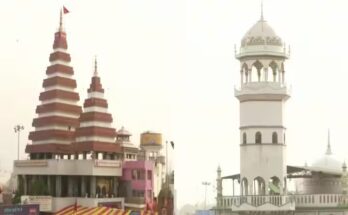
R Krishna Das
An ambush on October 21 in Arunachal Pradesh that killed a jawan and an interview of Manipur insurgent Thuingaleng Muivah a week ago of the incident has much to link for understanding China’s threat to support insurgency in India.
The Indian government since 1997 had a ceasefire agreement with National Socialist Council of Nagaland-IM (NSCN-IM) faction led by Isak Chishi Swu and Thuingaleng Muivah from Nagaland, and Manipur respectively. Isak passed away in New Delhi in 2016 at the age of 87 while the slightly younger Muivah is 86 and in frail health.
The Khaplang-faction of the National Socialist Council of Nagaland (NSCN-K), which is another group drawing most of its support from ethnic Nagas on the Myanmar side of the border, also has a following inside Nagaland and Manipur in India. For years, Naga, Assamese and Manipuri insurgents have been based in remote mountains of Myanmar’s northwestern Sagaing Region, from where they have launched raids into India and then retreated across the border beyond the Indian army’s reach.
Until the late 1980s, there was one NSCN with Isak as the chairman, Khaplang as vice chairman and Muivah as general secretary. But the Myanmar Nagas, led by Khaplang, eventually tired of being treated as serfs by their Indian cousins and drove them out of northern Sagaing.
The NSCN-IM was without a base area, and began operating through various NGOs in Southeast Asia with its leaders posing as representatives of “indigenous peoples.” But in the end, they had no choice but to enter into talks with the Indian government and a truce was reached.
Those talks and the 23-year-long ceasefire were supposed to lead to a final settlement to be signed this year. On October 16, Muivah declared in an interview in Indian portal that Nagaland — or a greater entity which he calls Nagalim and includes Naga-inhabited areas of Nagaland, Manipur, Arunachal Pradesh, Assam and parts of northwestern Myanmar — should have its own flag and constitution.
Muivah added that “Nagas will never be part of the Indian Union nor will they accept the Indian constitution.”
The NSCN-IM is believed to be behind an ambush on October 21 in Arunachal Pradesh, a state not covered by the ceasefire agreement, in which a soldier from the paramilitary Assam Rifles was killed. The incident took place in Tirap, a district bordering Myanmar.
The incident was not a mere attempt by NSCN-IM to show that it still had real military muscle. And the announcement of Muivah making bold demands was not just a piece of interview; there could be much to read between the lines.
The group could possibly sway China by inflicting the statement and giving an untimely interview challenging the Indian authorities. Beijing’s suggestion it might support ‘secessionist’ forces in India was an overt signal that it planned to revitalize historic links with Naga rebels.
The Nagas were the first ethnic minority in northeastern India to rise up against New Delhi, and they were also the first to receive Chinese support for their demand for a separate homeland. The “secessionist forces” that China’s mouthpiece paper recently talked about to support in India would likely be ethnic insurgents in northeast, armed groups that previously received massive support from Beijing and which still were known to maintain low-level contacts with Chinese security services.
But if China really intends to act on the tacit threat made to support “secessionist forces in India” it would make more sense to funnel arms to the NSCN-K, ULFA and the Manipuri groups than the NSCN-IM. NSCN-IM’s soldiers, equipped mostly with wooden replicas of rifles, are now confined to “ceasefire camps” in Nagaland where they conduct exercises, pray to God (most Nagas are Christian) and play ball games.



